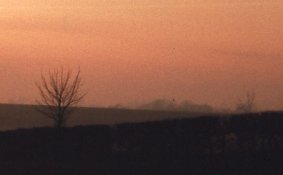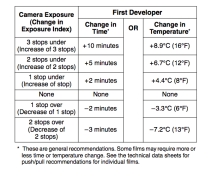Any pro lab will be able to push or pull your film, at a cost. (Usually, this cost ranges from +50% to +100% of simple development cost per stop of push).
Pushing slides is done by either extending the dev time or raising the temperature of the first developer. (The first developer acts like a simple B&W developer).
Some very useful guidelines regarding times and temperatures can be found in the thirteenth page of that document ===>
http://www.kodak.com/global/en/professional/support/techPubs/j83/j83.pdf
I screencapped and attached the interesting part:
View attachment 63206
Anyway, you're not required to know all this stuff, since the lab will do the pushing. You need to tell them how many stops you need your film pushed. Some pro labs can go in increments as small as 1/3 of a stop.
What you need to know though, is that each layer of colour films reacts differently to pushing, so some layers will get developed more in proportion to others, resulting in colour shifts. Contrast also increases and grain gets coarser. Each film is different, and I found the Provia 400X to be the best performing in pushing, with virtually no colour shift and contrast increase, and minimal increase in grain, up to ISO1600.
So, my suggestion is, to try and fine tune your exposure before resorting to pushing. It's
much more difficult to correct the weird colour casts you're getting by pushing than by exposure.
Just try bracketing your shots in 1/3 increments. I have a hunch that you're gonna get the results you want by overexposing ~2/3 of a stop. (Or just setting the ISO to ~140).
















